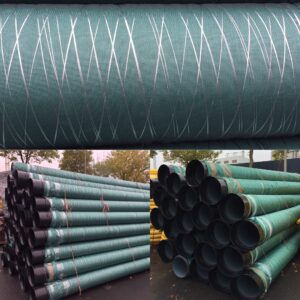Climate change has a big impact on our world and will continue to do so in the future. One of the major areas where it has an important influence is how we manage water and water availability. There is a need to better manage high amounts of storm water, and allow rainwater to infiltrate into the soil to replenish groundwater levels, while protecting our cities and infrastructure. In urban water management, geotextiles improve the performance of stormwater management systems and reduce the negative impacts of urbanization on water resources.
In urban areas, where space is limited and installation of retention ponds is not possible, water retention crates are often used. These systems are installed underground and create large voids to store significant amounts of water, allowing it to infiltrate locally into the soil and alleviating pressure on the sewage systems. A geotextile filter is ideal as a wrap around these crates acting as a separation and filtration layer. The geotextile allows the water to flow freely into the retention crates while preventing soil particles from flowing through. This keeps the retention system clean and highly functional.
When more space is available urban water management can also make use of more natural stormwater management systems, such as retention ponds and basins. These systems are designed to capture and store stormwater runoff, reducing the amount of water that enters the sewage system and reducing the risk of flooding. Geotextiles can be used in collection systems to separate the water from soil and contaminants, allowing water to enter the storage pond or basin while preventing soil erosion. When waterproofing liners are used in these systems, geotextiles can provide protection to these liners, preventing them from getting punctured.
On top of buildings, there is the potential to install green and blue roof systems to improve water management. These systems are designed to capture and store stormwater on top of the building, where it can be stored for use later on or gradually released to the sewage system, thus reducing the risk of flooding. Geotextiles are used as separation and filtration layers to avoid contamination of the drainage systems and heavier, thicker nonwovens also serve to protect the waterproofing layer to avoid water intrusion into the building.
To improve groundwater intrusion, permeable paving systems can contribute to increased local water infiltration. Geotextiles are used in such systems to avoid mixing of the different granular layers.
Geotextiles also help in the protection of water-related projects such as pond slopes, riverbanks, and coastal areas from erosion by providing a layer of protection.



